The Megalithic Enigmas Of Baalbek
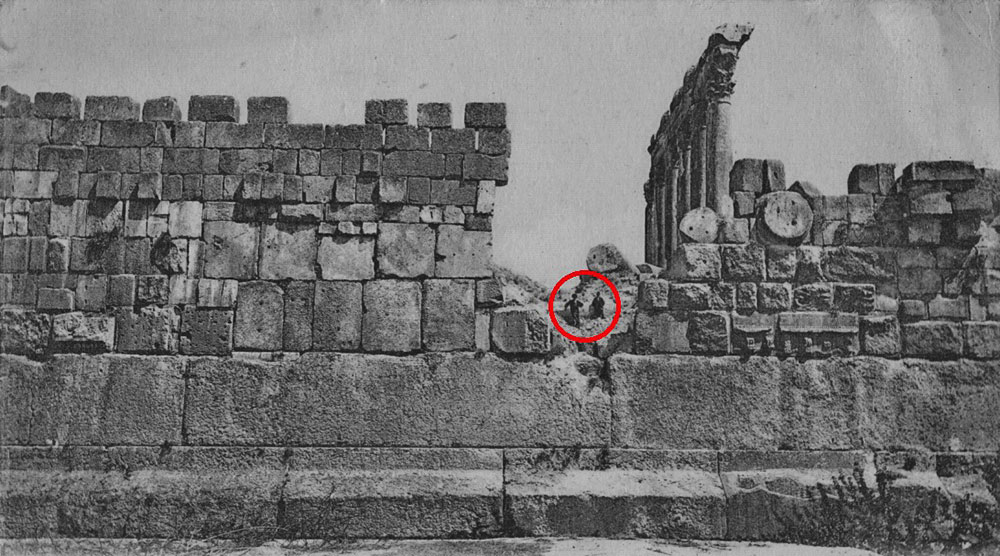
Located in Lebanon, about 65 km east of Beirut, Baalbek is one of the most important archaeological sites in the Near East and was declared a World Heritage Site by UNESCO in 1984.
Today Baalbek is a town in the Beqāʿvalley, the capital of a Lebanese district of the same name.
Located east of the headwaters of the river Leonte, at an altitude of 1170 meters above sea level, Baalbek is famous for the monumental ruins of some Roman temples dating back to the 2nd and 3rd centuries AD, when Baalbek, with the name of Heliopolis an important sanctuary dedicated to Jupiter Heliopolitan in the Roman province of Syria.
The origins of Baalbek date back to two Canaanite settlements that archaeological excavations under the temple of Jupiter have allowed to identify as datable to the ancient (2900-2300 BCE) and middle (1900-1600 BCE) Bronze Age.
The origin of the name is linked to the noun báʿal or bēl which in various languages of the north-western Semitic area (such as Hebrew, Canaanite, and Akkadian) means “lord”.
The term Baalbek would therefore mean “lord of the Beqa'” and would probably be related to the oracle and the sanctuary dedicated to the god Baal or Bēl (often identified as Hadad, god of the sun, storm, and fertility of the earth) and to Anat, goddess of violence and war, sister and consort of Baal (later identified with Astarte), possibly associated with Tammuz (later identified with Adonis), god of regeneration.
What fascinates most are the ruins on top of which the Roman temples were built.
Jewish historian Josephus (1st century) recalls Alexander the Great’s passage through Baalbek on his march to Damascus.
In the Hellenistic period, the city was renamed Heliopolis (“city of the sun”).
The Ptolemaic rulers probably favored the identification of the god Baal with the Egyptian sun god Ra and the Greek sun-god Helios, in order to cement greater cultural fusion within their territories.
The courtyard of the temple was modified and at its western end, the construction of a temple of Greek shapes was begun for which a gigantic platform (88 x 48 m) was built.
The actual building of this platform, formed by three monoliths weighing up to 800 tons each, is still a matter of heated debate.
As a matter of fact, it’s highly possible that both the Greeks and the Romans utilized a pre-existing platform that was considered a sacred place, and build their structures upon them.
The Temple of Jupiter
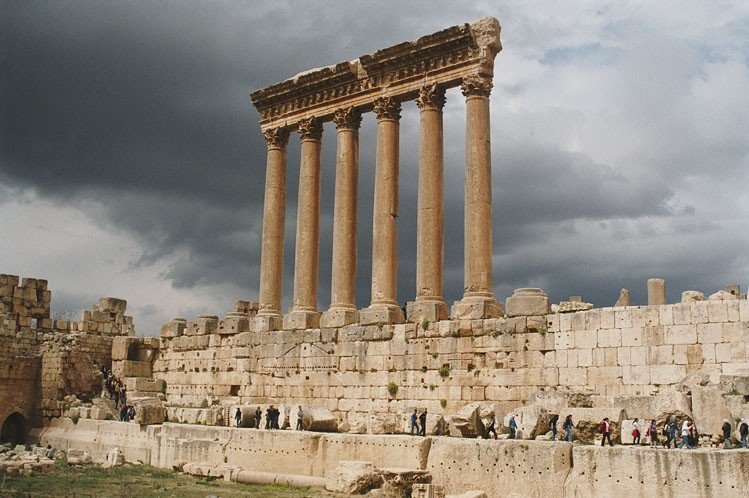
This age-old and mysterious archaeological site showcases an architectural style that really defies the laws of physics.
With its – supposed – 5000 years of history, Baalbek has some of the largest, biggest, and heaviest monoliths ever discovered.
This site was unanimously acknowledged as an important holy place, to the point that even the Romans, upon conquering the area, erected a temple dedicated to the god Baal-Jupiter, a hybrid between the Cananean god Baal and their own god Jupiter.
Today, the question of whether they were the same god is still debated, and no one knows exactly where its sacrality came from.
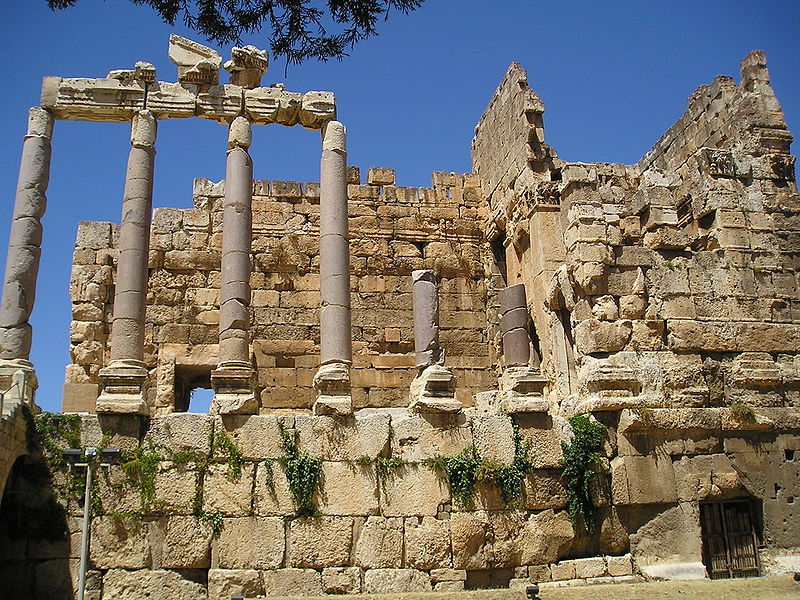
To tighten the mystery, the oldest part of the Baalbek remains, the original platform on which the Roman temple rests has defying dimensions and magnitude.
Three of the stones that are part of the base, in fact, are those known as the “Trilithon”: three monoliths, each longer than 19 meters, with a thickness and a height of approximately 4 meters and as heavy as 800 tons.
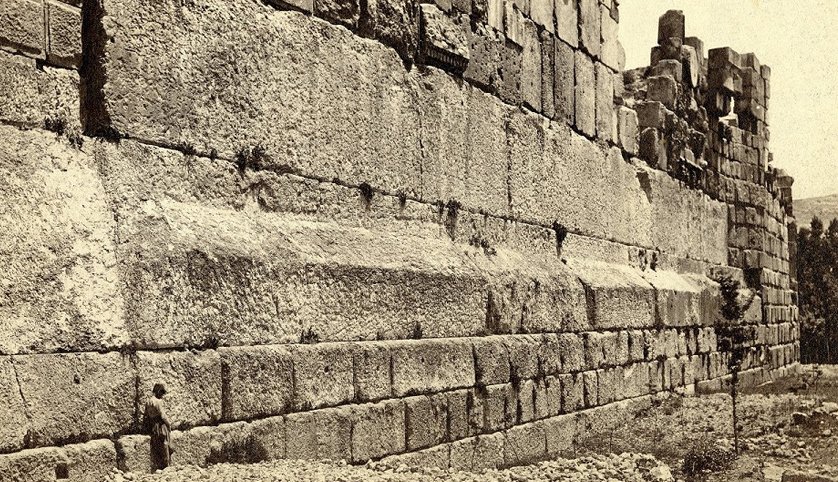
An interesting note left by Mark Twain’s upon visiting the temple reads as it follows:
” At eleven o’clock, our eyes fell upon the walls and columns of Baalbec, a noble ruin whose history is a sealed book. It has stood there for thousands of years, the wonder and admiration of travelers; but who built it, or when it was built, are questions that may never be answered. One thing is very sure, though. Such grandeur of design, and such grace of execution, as one sees in the temples of Baalbec, have not been equaled or even approached in any work of men’s hands that has been built within twenty centuries past.
The great Temple of the Sun, the Temple of Jupiter, and several smaller temples, are clustered together in the midst of one of these miserable Syrian villages, and look strangely enough in such plebeian company. These temples are built upon massive substructions that might support a world, almost; the materials used are blocks of stone as large as an omnibus—very few, if any of them, are smaller than a carpenter’s tool chest—and these substructions are traversed by tunnels of masonry through which a train of cars might pass. With such foundations as these, it is little wonder that Baalbec has lasted so long. The Temple of the Sun is nearly three hundred feet long and one hundred and sixty feet wide. It had fifty-four columns around it, but only six are standing now—the others lie broken at its base, a confused and picturesque heap. The six columns are their bases, Corinthian capitals and entablature—and six more shapely columns do not exist. The columns and the entablature together are ninety feet high—a prodigious altitude for shafts of stone to reach, truly—and yet one only thinks of their beauty and symmetry when looking at them; the pillars look slender and delicate, the entablature, with its elaborate sculpture, looks like rich stucco-work. But when you have gazed aloft till your eyes are weary, you glance at the great fragments of pillars among which you are standing, and find that they are eight feet through; and with them lie beautiful capitals apparently as large as a small cottage; and also single slabs of stone, superbly sculptured, that are four or five feet thick, and would completely cover the floor of any ordinary parlor. You wonder where these monstrous things came from, and it takes some little time to satisfy yourself that the airy and graceful fabric that towers above your head is made up of their mates. It seems too preposterous.“I can not conceive how those immense blocks of stone were ever hauled from the quarries, or how they were ever raised to the dizzy heights they occupy in the temples. And yet these sculptured blocks are trifles in size compared with the rough-hewn blocks that form the wide verandah or platform which surrounds the Great Temple. One stretch of that platform, two hundred feet long, is composed of blocks of stone as large, and some of them larger, than a street-car. They surmount a wall about ten or twelve feet high. I thought those were large rocks, but they sank into insignificance compared with those which formed another section of the platform. These were three in number, and I thought that each of them was about as long as three street cars placed end to end, though of course they are a third wider and a third higher than a street car. Perhaps two railway freight cars of the largest pattern, placed end to end, might better represent their size. In combined length these three stones stretch nearly two hundred feet; they are thirteen feet square; two of them are sixty-four feet long each, and the third is sixty-nine. They are built into the massive wall some twenty feet above the ground. They are there, but how they got there is the question. I have seen the hull of a steamboat that was smaller than one of those stones. All these great walls are as exact and shapely as the flimsy things we build of bricks in these days. A race of gods or of giants must have inhabited Baalbec many a century ago. Men like the men of our day could hardly rear such temples as these.”
The Temple Of Bacchus
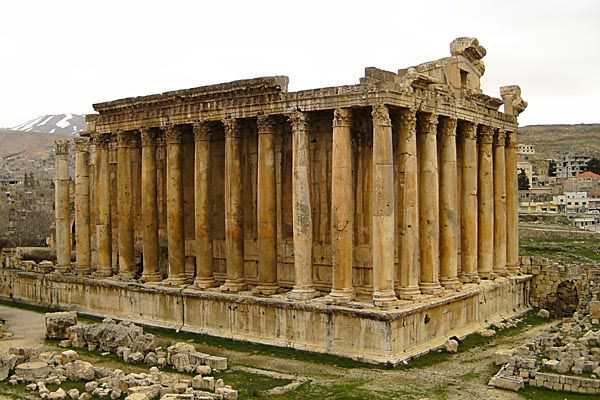
The temple was probably commissioned by Roman Emperor Antoninus Pius (r. AD 138-161). However, despite the Romans were very meticulous on recording their constructions and buildings, strangely enough, no information was ever recorded about the site.
The temple is 66 m long, 35 m wide and 31 m high, making it only slightly smaller than the Temple of Jupiter. It is also the best preserved one.
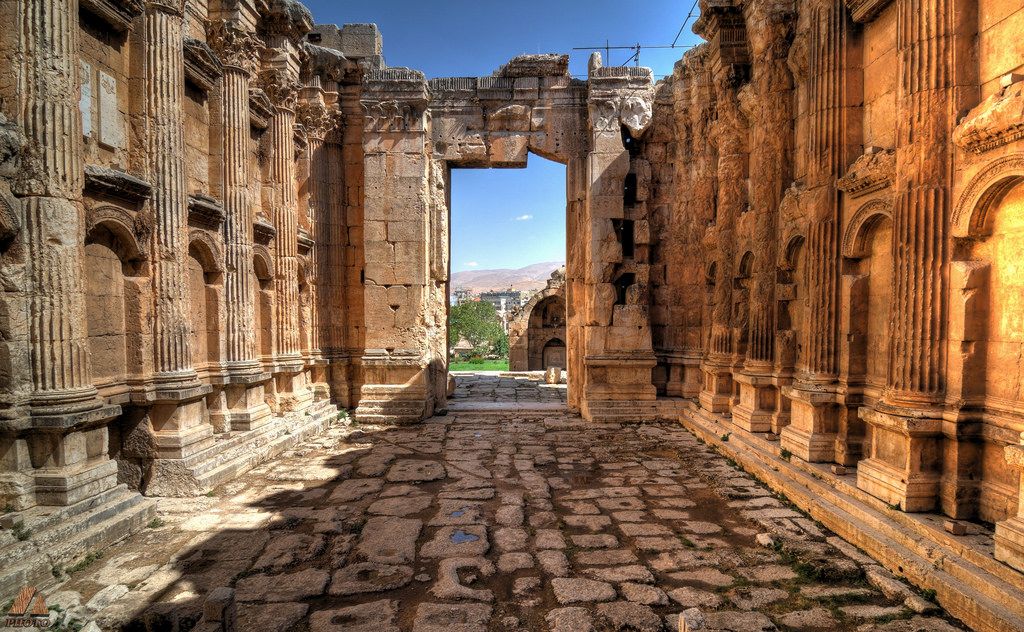
The stone of the pregnant woman
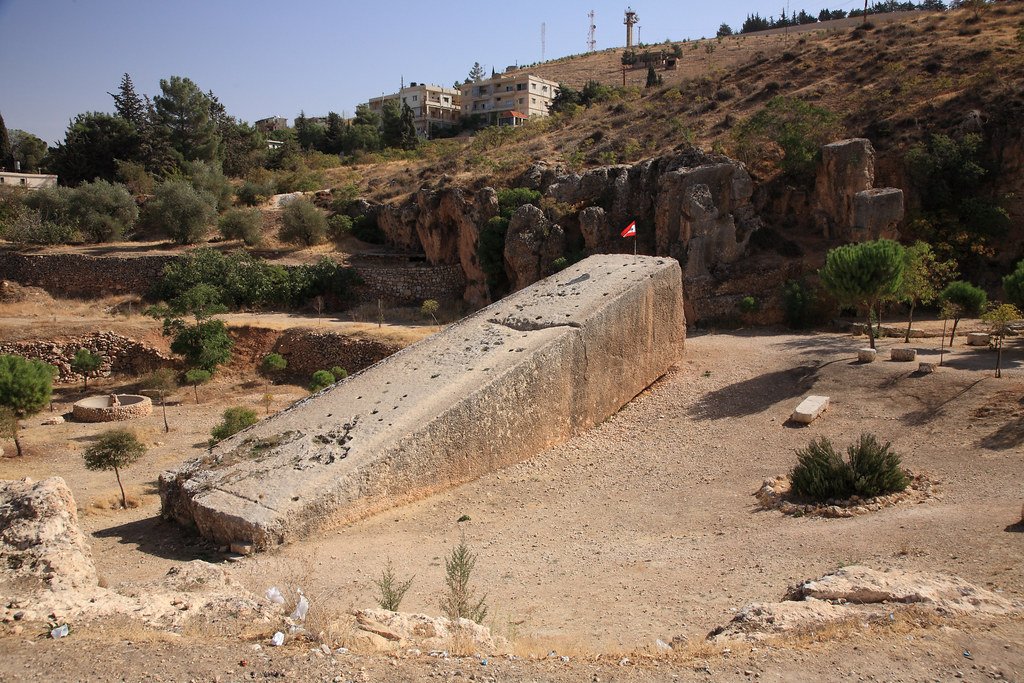
Together with another ancient stone block nearby, this stone is among the largest monoliths ever quarried.
The two building blocks were presumably intended for the nearby Roman temple complex, possibly as an addition to the so-called trilithon, and are characterized by monolithic gigantism that was unparalleled in antiquity.
According to their calculations, the block weighs 1,000.12 t.
Its measurements are:
- 20.31–20.76 m long
- 4 m wide at the base
4.14–5.29 m wide at the top
4.21–4.32 m high
Other monoliths have been discovered in the surroundings.
the second monolith
A second ancient monolith was discovered in the same quarry in the 1990s. With its weight estimated at 1242 t, it surpasses even the dimension of the Stone of the Pregnant Woman.
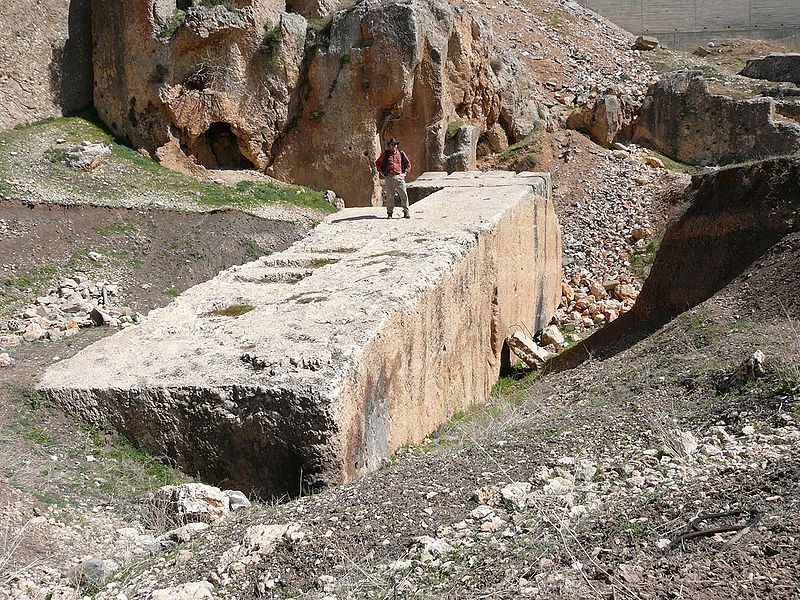
Measurements of this second stone:
- 19.5–20.5 m long
- 4.34–4.56 m wide
- 4.5 m high
The third monolith
A third ancient monolith was discovered in the same quarry in 2014 by the German Archaeological Institute. Its weight is estimated at around 1650 t, making it one of the largest stones ever carved by human hands.
It measures:
- 19.6 m long
- 6 m wide
- at least 5.5 m high (still partly buried)
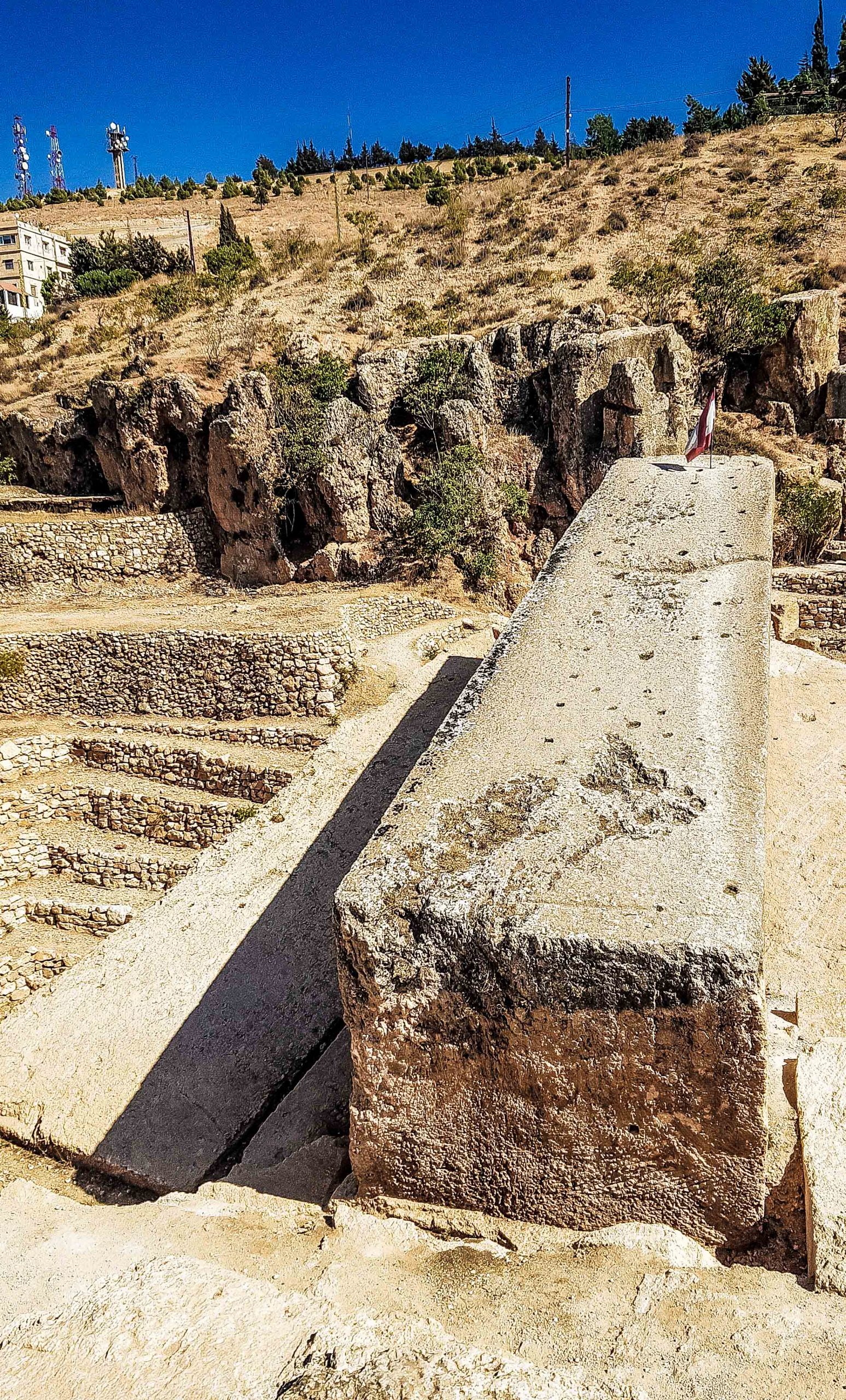
stone artifacts found at baalbek
Several artifacts were found with features linking to ancient iconography and other cultures that thrived in the distant past.
One of them is the swastika, a symbol that was widely used by almost every ancient civlization, in India, Italy, China, and even South America.
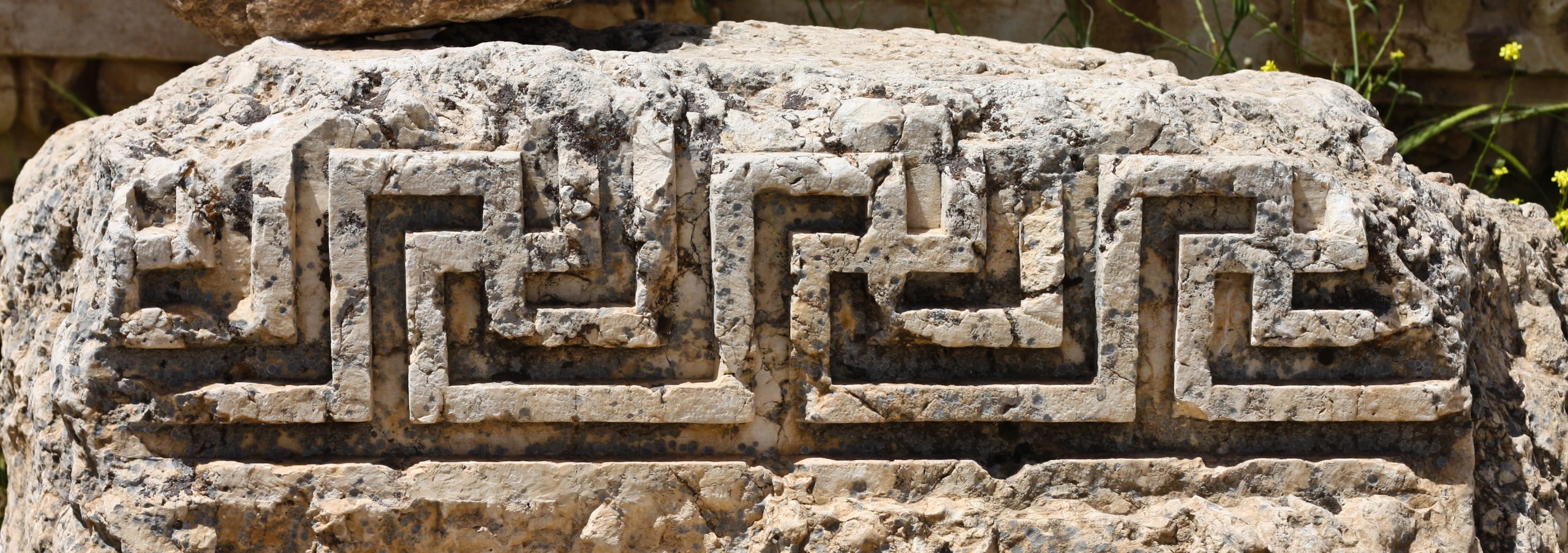
Another being a symmetrical pattern linked to sacred geometry, as well as flowers reminding of the flowers of life.
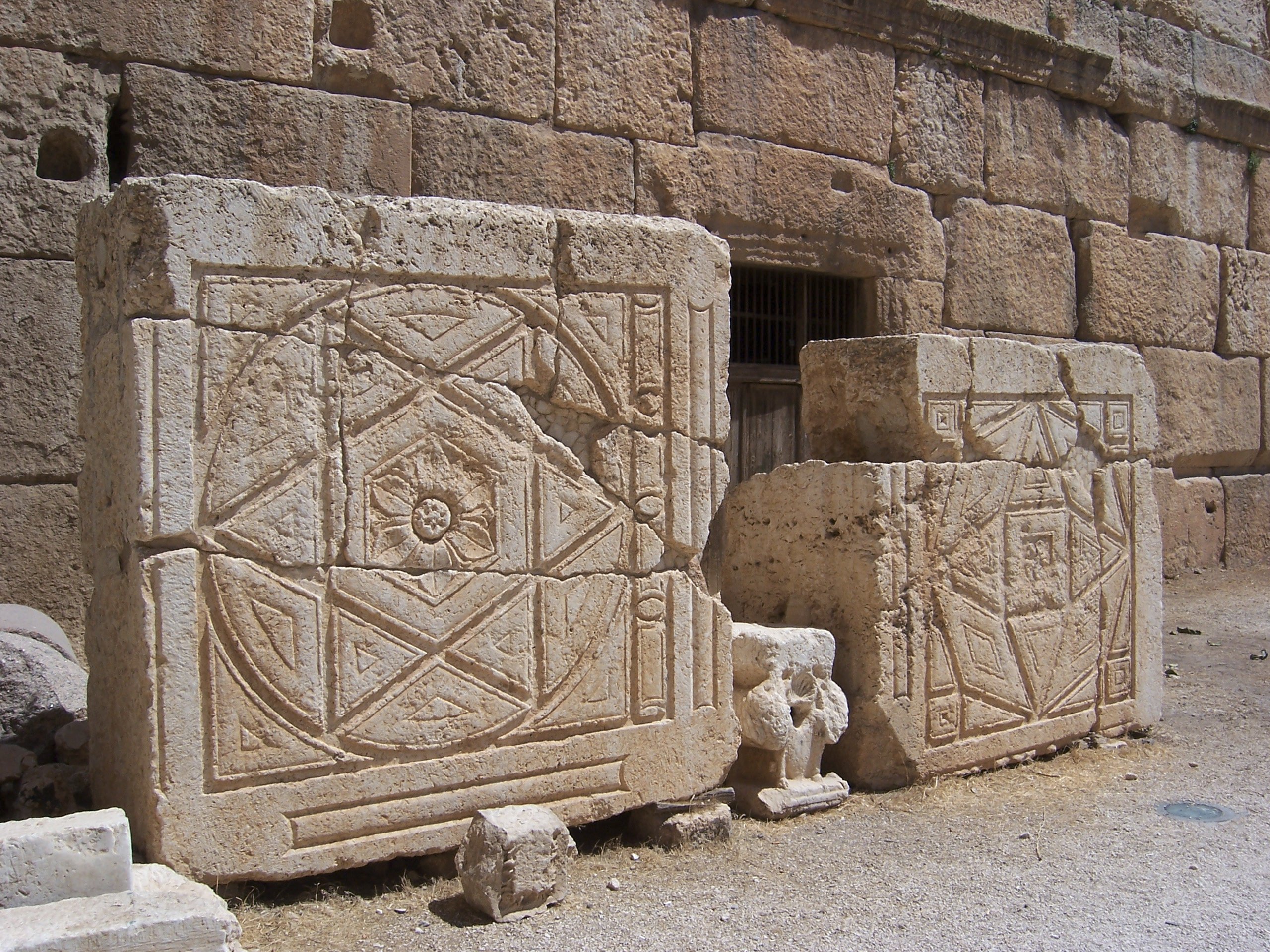
This archaeological site is certainly one of a kind, and this is evident by the importance it had since the earliest times.
The debate over its magnitude and building is still heated after many years, with countless authors, documentaries, engineers, architects trying to have their take on the technique used to build this site. Not only, there also many ancient historians and authors that tried to give their own hypothesis, such as Vitruvius and Xenophon.
Despite all these opinions and hypotheses, there is no consensus on how such stones could have been moved by people even by using advanced techniques of construction.
